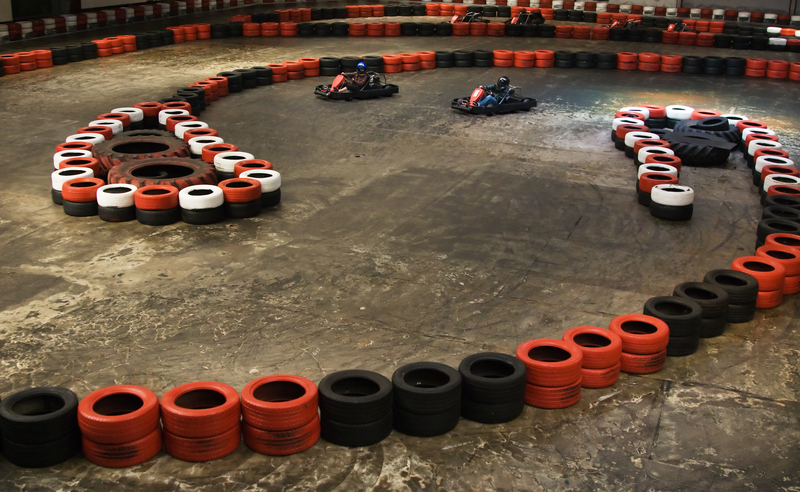Your Role in Keeping the Environment Safe from PPE Pollution
Personal Protective Equipment (PPE), like masks, gloves, and face shields, has become a crucial part of our daily lives. While PPE is essential for health and safety, the increasing use during pandemics or in the workplace has led to an alarming rise in environmental pollution. Understanding your role in preventing PPE pollution is key in supporting sustainability and protecting our planet. This comprehensive guide delves into the importance of keeping the environment safe from PPE litter, offers actionable tips, and encourages individual and collective responsibility.
Understanding PPE Pollution: A Growing Environmental Threat
What is PPE Pollution? Personal Protective Equipment pollution refers to the accumulation of used/discarded PPE in the environment. From city streets to remote beaches, improperly disposed masks and gloves are becoming ubiquitous, threatening wildlife, water quality, and human health.
The Consequences of PPE Pollution
- Wildlife Hazards: Animals can ingest or become entangled in PPE, causing injury or death.
- Microplastic Generation: Most PPE is made of polypropylene and other plastics. When these items break down, they contribute to microplastic pollution, contaminating soil and waterways.
- Blockage of Water Systems: Masks and gloves can clog stormwater drains, leading to urban flooding and higher maintenance costs.
- Public Health Risks: Used PPE may carry infectious agents, endangering sanitation workers and others who come into contact with it.

Why Your Actions Matter in PPE Waste Reduction
Your behavior influences both the amount of PPE waste generated and how much actually pollutes the environment. As a consumer, worker, or even a passerby, you play a direct role in each phase of the PPE lifecycle--from purchase to disposal.
PPE Usage and Environmental Impact: A Snapshot
- Trillions of single-use masks and gloves are used worldwide every year.
- Billions end up polluting waterways, landfills, and natural habitats.
- Less than 3% of PPE waste is currently being recycled thanks to the complexity in recycling contaminated materials.
Your Role in Safe PPE Disposal: Practical Steps
Every individual can help minimize PPE pollution. Here are some actionable and environmentally friendly tips for handling PPE waste responsibly:
1. Proper Disposal of Used PPE
- Always remove PPE carefully to minimize contact with potentially contaminated surfaces.
- Do not litter masks, gloves, or wipes in public spaces--carry a sealable bag to store used PPE until you find a trash bin.
- Do not flush PPE down toilets or drains; they are designed for solid waste and can block pipes or enter waterways.
- If local guidelines exist for hazardous waste or PPE disposal, follow them strictly (some cities provide special bins for PPE).
2. Choosing Reusable and Eco-friendly PPE Alternatives
- Opt for reusable masks made of fabric, which can be washed and reused multiple times, drastically reducing plastic waste.
- Encourage workplaces and schools to adopt reusable PPE, such as face shields made from recycled materials.
- When purchasing disposable PPE, look for biodegradable or compostable options, if feasible.
3. Educating Yourself and Your Community
- Spread awareness about the importance of PPE pollution prevention among family, friends, and colleagues.
- Share reliable information on safe PPE disposal methods through social media or neighborhood groups.
- Engage with local community clean-up initiatives targeting mask and glove litter in public spaces.
4. Supporting PPE Recycling Innovations
- Support brands, companies, or campaigns that recycle PPE into new products, such as construction materials, furniture, or road surfaces.
- Advocate for the installment of dedicated PPE collection points in your community or workplace.
- Encourage policymakers to create and enforce regulations on PPE recycling and extended producer responsibility.
PPE Pollution: Your Impact Beyond the Household
Your role extends beyond personal habits. Whether you are a business owner, an educator, or a member of a community organization, the steps you take have a ripple effect. Here's how you can amplify your impact and help keep the environment safe from PPE waste:
At Workplaces and Schools
- Implement PPE Waste Segregation: Provide clearly labeled bins for PPE waste, separate from general trash and recyclables.
- Train staff and students on the dangers of PPE pollution and encourage best practices for use and disposal.
- Partner with local waste management companies that handle PPE safely and consider options for recycling where available.
Within Local Communities
- Coordinate community-wide PPE waste drives and recycling events.
- Lobby for new public policies that incentivize sustainable PPE use and penalize littering.
- Create educational campaigns about the intersection of public health and environmental protection, emphasizing PPE's role.
As an Informed Consumer
- Choose suppliers and brands committed to sustainable PPE manufacturing and waste management.
- Support local artisans or businesses who create reusable PPE products using eco-friendly materials.
- Share your sustainable choices on social media to inspire others and advocate for broader industry changes.
The Big Picture: How PPE Pollution Affects Our Planet
Beyond immediate health risks, PPE waste is rapidly transforming into a long-term environmental crisis:
- Marine Life At Risk: Masks and gloves resemble jellyfish or other marine foods, leading to accidental ingestion by turtles, birds, and fish.
- Soil and Water Contamination: Decaying PPE releases microplastics and potentially toxic additives into the ecosystem.
- Greenhouse Gas Emissions: Burning or improper disposal of PPE contributes to carbon emissions and air pollution.
By 2050, some experts estimate that there may be more plastic in the oceans by weight than fish, with PPE pollution playing a significant role if current trends continue. This underlines the urgency of your actions today to keep the environment safe from used masks and gloves.
Best Practices for Minimizing the Environmental Impact of PPE
1. Track Your PPE Usage
- Monitor how many disposable masks and gloves your household or workplace uses weekly.
- Set targets to reduce consumption through increased adoption of reusable options.
2. Encourage Proper Habits in Children and the Elderly
- Teach children how to remove and dispose of PPE properly.
- Provide education materials in schools about the dangers of PPE littering.
- Assist older adults with finding reusable options or disposing items safely if mobility is an issue.
3. Participate in Research and Surveys
- Take part in local or online studies about PPE usage and environmental impact--your data can shape better policies.
- Report sightings of PPE litter to local authorities or cleanliness apps for prompt clean-up.
The Legal and Policy Framework: What's Being Done?
Governments and organizations are increasingly addressing PPE waste with innovative approaches:
- Some nations have implemented bans on single-use plastics, encouraging a shift to reusable PPE where health regulations allow.
- Cities worldwide are deploying special PPE waste bins in public places, train stations, and airports.
- Several organizations are funding research on developing biodegradable or easily recyclable PPE materials.
However, these measures are only effective with public participation. This means your conscientious choices directly support and reinforce legislation and sustainable initiatives.
The Role of Producers and Retailers
- Manufacturers are increasingly expected to take responsibility for the life cycle of their products, from raw materials to end-of-life disposal.
- Retailers can offer in-store collection points for used masks and gloves.
- You can influence these trends by using your purchasing power to support responsible brands.

A Shared Responsibility: Everyone's Role in Environmental Protection Against PPE Litter
Keeping the environment safe from PPE pollution demands a collective and sustained effort. Here's a summary of how you can make a difference today:
- Embrace reusable PPE wherever possible.
- Dispose of PPE responsibly--never litter.
- Educate and encourage others in your circle to follow proper disposal practices.
- Support or participate in local environmental initiatives targeting PPE waste management.
- Advocate for improved legislation, infrastructure, and PPE innovation in your area.
Conclusion: Your Environmental Legacy Starts with Responsible PPE Use
Your role in keeping the environment safe from PPE pollution is more significant than you may realize. Through mindful consumption, proper disposal, and community advocacy, each of us can contribute to a cleaner, safer, and more sustainable world. By taking responsibility for our own actions and influencing others, we not only reduce the impact of PPE pollution but also set a powerful example for future generations.
Let us all commit today to protecting both our health and our planet. Remember, every mask, glove, and shield counts--dispose of them wisely and play your part in keeping the environment safe from PPE waste.
For further tips, keep informed on local guidelines and continue seeking sustainable innovations to minimize your environmental footprint. Together, we can turn the tide on PPE pollution.
